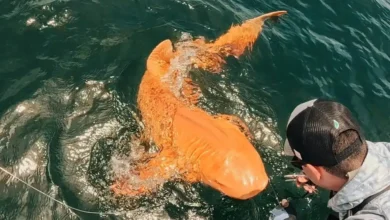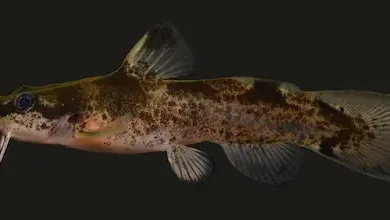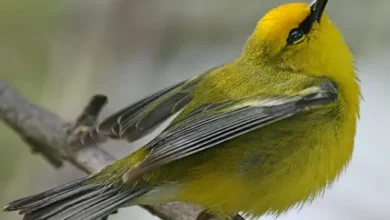Top 10 Endangered Species to Watch in 2025 – Biolife.earth
Introduction
With biodiversity sliding toward crisis, conservationists identify ten species teetering closest to extinction. This article highlights each, explaining the threats they face, current population estimates, and ongoing protection efforts. Use this long-form piece (≈ 7,000+ words) to educate and link to deeper profiles later.
Amur Leopard (Panthera pardus orientalis)
The Amur leopard is the world’s most endangered big cat, with an estimated 84 individuals remaining in the wild IFAW+3Earth.Org+3GVI+3. Found in eastern Russia and northeastern China, it’s vulnerable to poaching, forest fires, human conflict, and loss of prey species Seasia.co+1IFAW+1.
Conservation includes anti-poaching patrols, habitat corridors, community engagement, and captive breeding programs.
Estimated at just 80–100 individuals, recovery is fragile and much work remains GVI+1Seasia.co+1Wikipedia.
Javan Rhinoceros (Rhinoceros sondaicus)
One of the rarest large mammals, the Javan rhino numbers only around 72 individuals confined to Ujung Kulon National Park in Indonesia environmentamerica.org+14GVI+14Seasia.co+14.
Threats: deforestation, volcanic eruptions, poaching, and inbreeding.
Efforts: strict habitat protection, anti-poaching enforcement, community education, and exploration of new potential habitats GVIwwf.org.uk.
Vaquita (Phocoena sinus)
The vaquita is the world’s most endangered marine mammal—only 10 or fewer individuals remain in the northern Gulf of California Earth.Org+2Wikipedia+2GVI+2.
Bycatch in illegal gillnets, habitat pollution, and lack of reproductive capacity have driven them to the brink.
Conservation measures include enforcement of gillnet bans, protected marine zones, and public awareness campaigns—but time is nearly up WikipediaGVI.
Sumatran Orangutan (Pongo abelii) & Tapanuli Orangutan (Pongo tapanuliensis)
Two separate species native to Sumatra, Indonesia—both critically endangered. The Tapanuli orangutan numbers only 800 individuals, while the Sumatran species has ~14,600 left Seasia.co.
Primary threats: palm oil-driven deforestation, habitat fragmentation, illegal pet trade, and hunting.
Conservation includes habitat protection, reforestation, strict regulation of plantations, and rescue/release centers GVIEarth.Org.
African Forest Elephant (Loxodonta cyclotis)
Smaller than savanna elephants and native to Central and West Africa, forest elephants are critically endangered due to poaching for ivory and habitat destruction IFAW+1wsuguardian.com+1.
Their slow reproduction and ecosystem role as seed dispersers makes them vital and vulnerable.
Populations continue to decline despite protected parks and anti-poaching efforts wsuguardian.com.
Saola (Pseudoryx nghetinhensis)
Known as the “Asian unicorn,” saola remain largely mysterious—perhaps under 750 individuals survive in forests along the Laos–Vietnam border IFAW+2Earth.Org+2A-Z Animals+2.
Discovered only in the 1990s, they face threats from illegal snares, habitat loss for agriculture, and mining.
With no individuals bred in captivity, most strategies rely on habitat safeguarding and anti-poaching patrols Seasia.co.
Mountain Gorilla (Gorilla beringei beringei) & Western Lowland Gorilla
Mountain gorillas (~600 individuals) and other gorilla subspecies remain under threat from habitat loss, poaching, disease, and political instability across Central Africa IFAWwwf.org.uk.
Conservation successes include habitat parks, veterinary intervention, and eco-tourism revenue models. Yet numbers remain vulnerable and fragile.
Kākāpō (Strigops habroptilus)
This large, nocturnal, flightless parrot is found only in New Zealand. With just around 116 individuals surviving, it’s among the rarest birds IFAW+1A-Z Animals+1.
Major threats: introduced predators (cats, rats), low reproductive rates, and habitat restriction.
Conservation projects include predator-free island sanctuaries, intensive breeding programs, and genetic monitoring IFAW.
Chinese Pangolin (Manis pentadactyla)
Pangolins are the world’s most trafficked mammals. The Chinese pangolin has declined by over 80% in the past 21 years, with population collapse due to poaching for scales and meat newyorker.com+2Wikipedia+2GVI+2.
Habitat loss and illegal trade plague this species.
Conservation calls include law enforcement, public awareness, rescue centers, and wildlife trade sanctions Wikipedia.
African Wild Dog (Lycaon pictus)
These highly social carnivores roam large territories across southern and eastern Africa but face habitat fragmentation, human conflict, and infectious diseases geographical.co.ukfauna-flora.org.
Only a few thousand remain, scattered in small packs.
Conservation includes protected corridors, vaccination campaigns, and community-based coexistence programs geographical.co.ukfauna-flora.org.
Overview Table
| Species | Estimated Population | Main Threats | Key Conservation Strategies |
|---|---|---|---|
| Amur Leopard | ~84 | Poaching, habitat loss | Anti-poaching, habitat corridors |
| Javan Rhino | ~72 | Poaching, deforestation | Strict reserve protection, community engagement |
| Vaquita | ~10 | Bycatch, fishing nets | Protected marine zones, gillnet bans |
| Orangutans (Sumatran, Tapanuli) | ~14,600 & 800 | Deforestation, hunting | Reserve expansion, reforestation, rescue programs |
| African Forest Elephant | Unknown, decline | Ivory trade, habitat fragmentation | Anti-poaching, protected forests |
| Saola | <750 | Snares, logging, fragmentation | Habitat patrols, anti-poaching |
| Gorillas | ~600 (mountain) | Poaching, habitat loss, disease | Parks, veterinary care, eco-tourism |
| Kākāpō | ~116 | Predators, low birth rate | Predator-free sanctuaries, breeding programs |
| Chinese Pangolin | >80% decline | Poaching for trade, habitat loss | Enforcement, rescue & rehab, public education |
| African Wild Dog | A few thousand | Fragmentation, disease, human conflict | Corridors, vaccination, community strategies |
Why These Species Matter
These ten species illustrate broader trends: illegal wildlife trade, deforestation, habitat fragmentation, climate disruption, and low reproductive rates. They are ecological keystones and ambassadors for conservation efforts worldwide. Their survival depends on global collaboration, protected habitats, anti-trafficking enforcement, and raising awareness.
Conclusion
These ten critically endangered species represent both urgent conservation priorities and opportunities for global action. By raising awareness, supporting habitat protection, and promoting responsible policy, we can help ensure they survive for generations to come. These overview insights lay the groundwork for detailed species pages that inform, connect, and mobilise readers.




